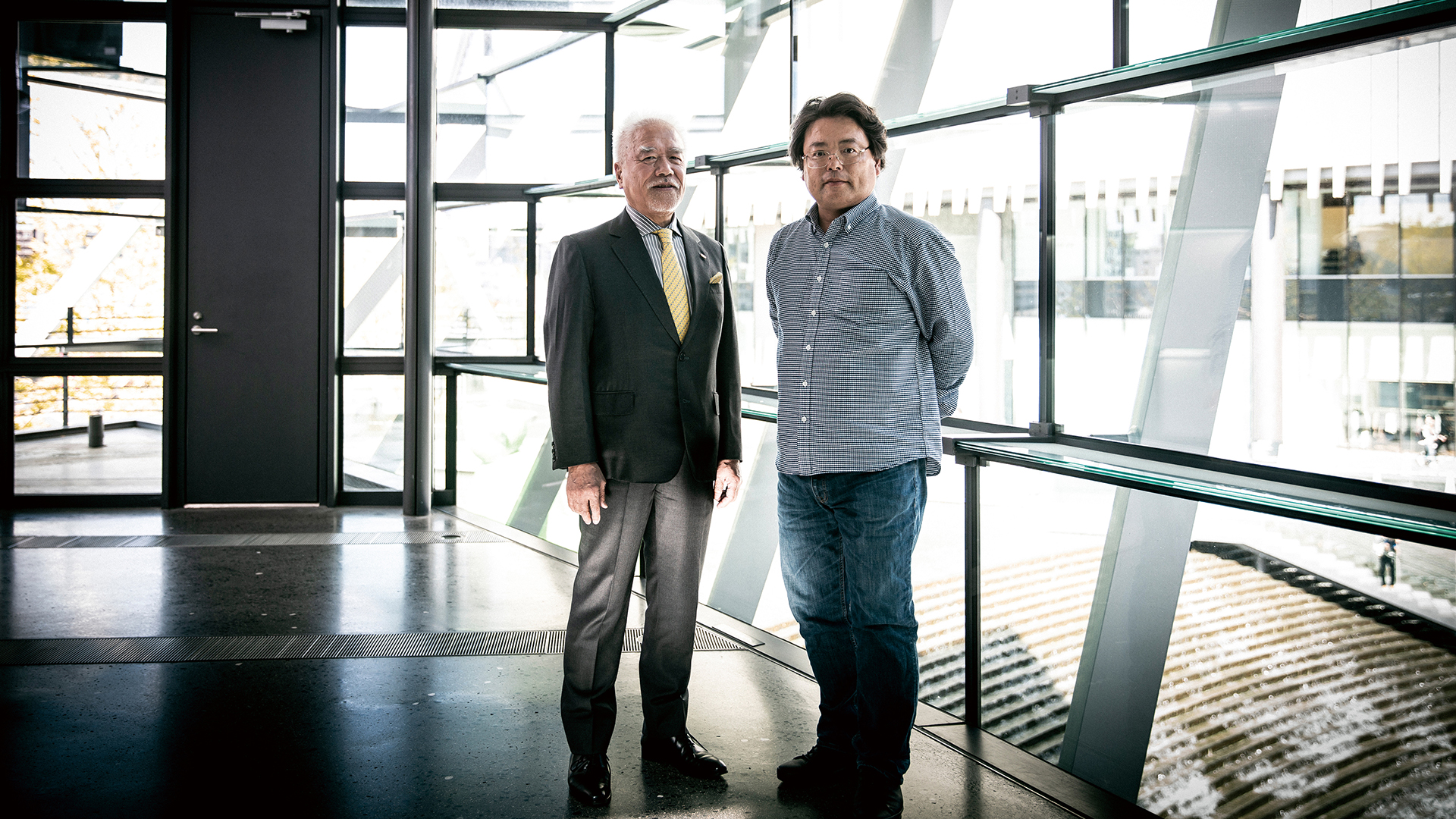
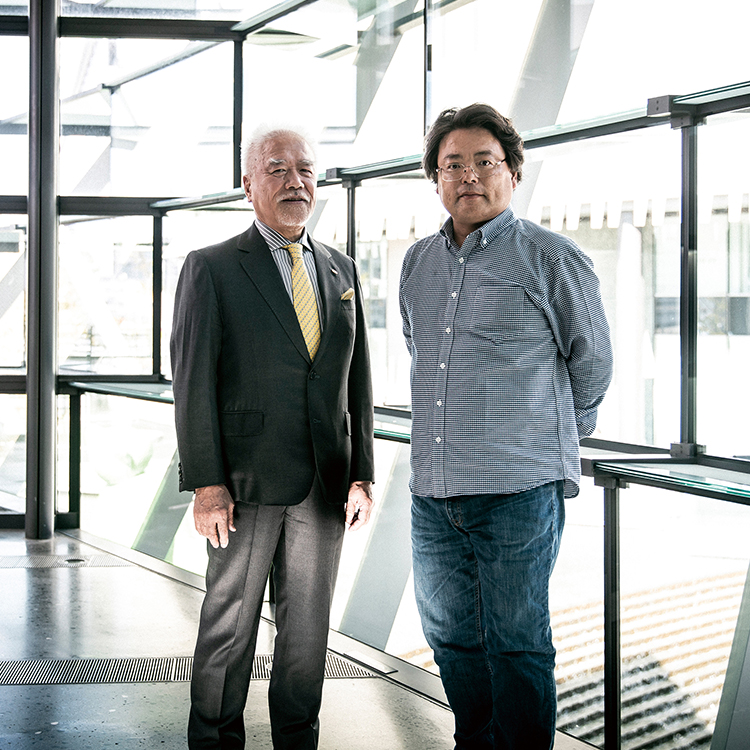


Junzo Tateno
CEO of UNION Corporation
Born in 1947, Junzo Tateno graduated from the Faculty of Law at Konan University (Kobe, Japan) in 1970
and entered Aoki Construction that same year. He joined UNION in 1973 and became CEO and President in 1990.
He serves as Chairman of the Union Foundation for Ergodesign Culture, a Public Interest Incorporated Foundation,
and the Osaka Industrial Bureau. He is also Vice Chairman of the Osaka Chamber of Commerce and Industry.
Taro Igarashi
Born in 1967 in Paris, France. Graduated from Tokyo University's Department of Architecture. Received a doctorate from the University of Tokyo's Graduate School doctoral program after authoring a dissertation on the Philosophy and Implementation of New Religious Spaces. Took a professor's position at Tohoku University's graduate school. In 2011, he was the artistic director for the Aichi Triennale. In 2008, after nominating Junya Ishigami as an artist for the 11th International Architecture Biennale in Venice, he was selected as the commissioner for the Japan Pavilion. His books include Terminal and Inaugural Architecture. New Religion and Monumental Architecture, War and Architecture, and Over-protected Cities among numerous other works.
7
TATENO
Have you visited the Tohoku disaster site since then?
IGARASHI
I haven't done any specific disaster-site projects per say. But I usually visit once or twice a year. I'm interested in how disaster changes landscapes.
TATENO
Fascinating. Your title says 'Architectural Historian.' What exactly does that job entail?
IGARASHI
At Japanese universities, architecture is taught through colleges of engineering. It's maybe one of the only engineering departments where they regularly teach history. Most engineers study machines, materials, data, even things like aviation.
And of course, architects have to study engineering, structures, material sciences and such. There are even architectural researchers who specialize in the engineering side of things. But we also teach history, which is a bit special.
TATENO
I see.
IGARASHI
We look at old documents and literature. Where old buildings still remain, we go out and carefully survey them. So why do architects alone among engineers study history? It's interesting. Most other fields are rapidly and steadily evolving; every year sees new progress. Tomorrow will be better than today, and the technology we'll have 10 years from now will be better than the technology from 10 years ago.
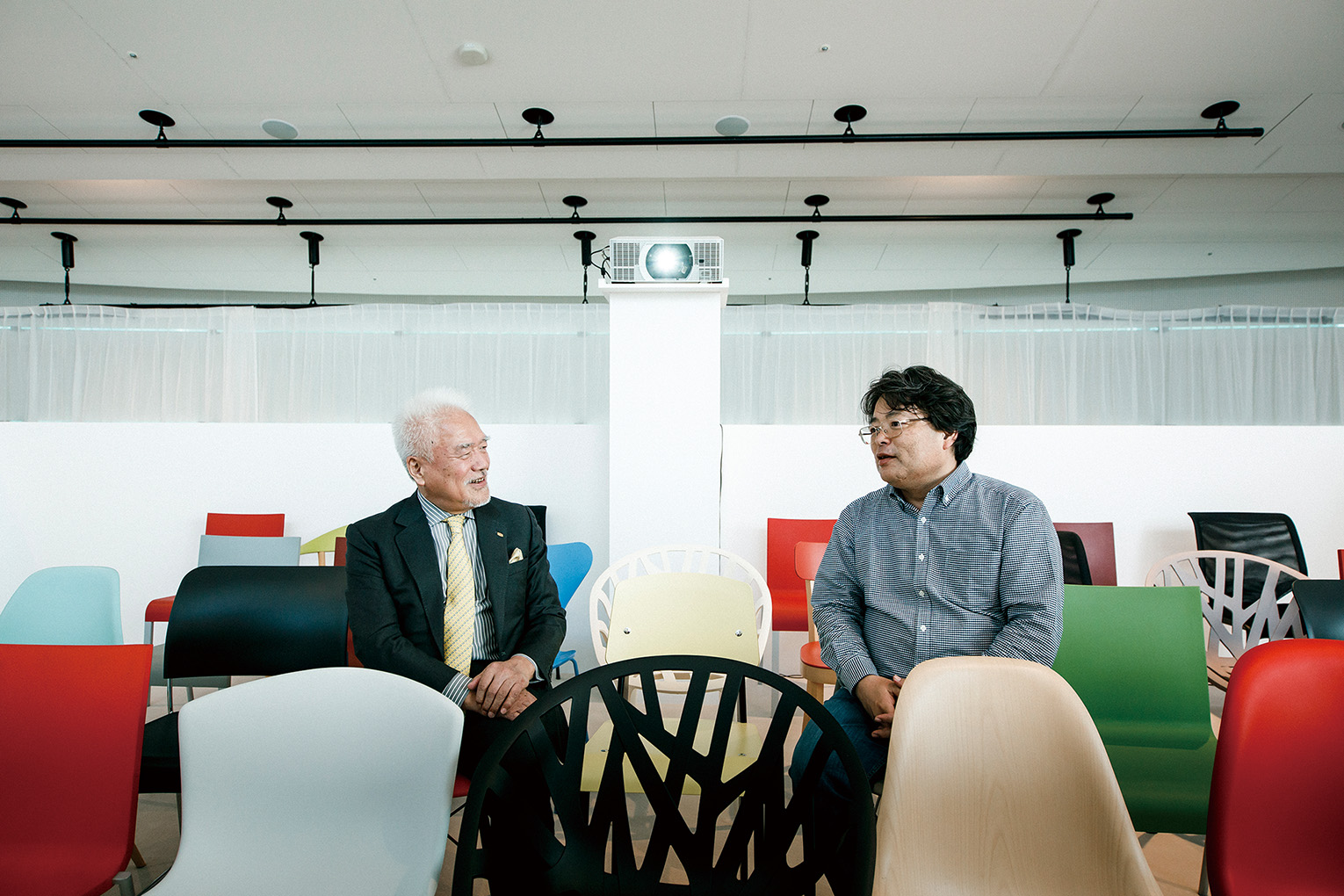
TATENO
Technology always advances. Take cell phones, for example.
IGARASHI
Right. Old technology becomes outmoded and improved so quickly that technological history is largely trivia; it's unnecessary. Only in architecture are new things not necessarily the best things. Even today, when we see the 2000-year-old Roman Coliseum, we're humbled by its enormity. The scale of humanity never really changes.
IGARASHI
It is indeed. And then, take the gothic cathedrals from 800 years ago. In terms of height alone they can't compare to modern skyscrapers, yet nothing today can match their overwhelming sense of space and weight. 500-year-old renaissance designs, by the likes of Palladio and Michelangelo, are also quite interesting. That's what's so special about architecture; we still have things to learn from the past, and old buildings are still truly amazing today. And that's why we do architectural history.
TATENO
I'm sure there were some buildings you fell madly in love with when you were a student. Why didn't you choose to become an architect?
IGARASHI
When I first went to university I wanted to be an architect. I even worked on a design project to graduate, which was interesting. But the main reason I didn't become one is that I realized I would never be as good as the really great architectural designers. At about that time I discovered what I could do, perhaps better than my peers, was to write really well. And so I became an architectural historian. Of course, the upcoming Under 35 Architects Exhibition features Mitsui-san and Tomoya-san, both of whom studied architectural history but ultimately ended up as architects in their own right.
TATENO
But you stuck with history.
IGARASHI
Yes. There are plenty of people out there who can design beautiful buildings. It's probably best for everyone involved if we leave the designing to them. *Laughs.* I have a different talent, so in the end I'm glad I ended up as a historian.
TATENO
Japan's has a tradition of tearing down the old and replacing it with the new. Much of the architecture you see today is born of a repetition of this process. In Europe, by contrast, they tend to make use of existing structures and build their towns and communities to continually incorporate the old. What's your take on these two traditions?
IGARASHI
In terms of Japan's practice of destroy-and-rebuild, one major issue is the materials at our disposal. There is an exchange student from France currently attending our institute. His family home in the French countryside was built in the 16th century.
TATENO
That's amazing.
IGARASHI
Right. They have a completely different understanding of time than the Japanese. His house is made of stone, giving it strength and durability. Conversely, wooden structures commonly used in Japan require extensive, constant maintenance to keep them in good condition. Temples like Horyu-ji are still around today because they've undergone repeated large-scale restorations throughout their history. An amazing feature of stone is that it doesn't really wear away or disappear with time, which gives it a strength unlike other materials.
TATENO
Each material really does have its own unique qualities.
IGARASHI
Yes. There's also an issue of real estate conventions between the two cultures. In Japan, the land itself holds all the value. People don't pay much attention to what sits on top, and focus entirely on the lot, which contributes to this practice of rebuilding on sites once they become available.
TATENO
True.
IGARASHI
On top of this, in Japan we have a high inheritance tax that must be paid on owned land, which leads to people tearing down privately-owned structures - regardless of architectural worth - to divide up the land underneath and circumvent these taxes. Buildings are essentially placeholders on top of the real commodity, which is land. Europe, on the other hand, assesses real estate as the combination of the land itself and what sits on top of it, and value increases as time passes. If you tear down a building to more efficiently sell the land, you're losing most of your value. That's what I mean by having a different understanding of time.
TATENO
So there's a sense that something has aesthetic value simply from the length of its history.
IGARASHI
Yes, something like that. After World War II, scrap-and-build construction really took off in Japan, and among developed nations, we began to see the fastest cycle for rebuilding residential structures, at just under 30 years. On the other hand, our average lifespan is among the longest in the world. This means that if the average Japanese person lives to 80 years old, they will have been around for more than twice as long as the typical home.
TATENO
It seems like such a waste.
IGARASHI
Economically speaking, I do feel this is one of the factors that helped rebuild Japan after the war. At the same time, I also think this gave a lot of architects the chance to try their hands at building residential structures. This allowed architects like Tadao Ando and Toyo Ito the opportunity to work on actual architectural projects from a young age and step up their abilities in preparation for spreading their wings on the global stage. It was really a unique time when anyone could build a house without being exceptionally rich.

TATENO
So basically an opportune scenario arose that contributed both to the growth of the economy and young architectural talent.
IGARASHI
Yes. During this same time, European architects were only able to work on private residences for extremely wealthy households. Most of the work consisted of renovations, interior design, and housing complexes. Unintentionally, postwar Japan presented Japanese architects with the perfect environment to test and grow their skills. I suspect policies for increasing home ownership were intended to get our economy going.
TATENO
As part of revitalizing Kyoto, there has been a lot of work to renovate old machiya townhouses for use as restaurants and bed and breakfasts. How do you feel about this trend?
IGARASHI
This same thing is common in Europe and other countries as well.
TATENO
Is that right?
IGARASHI
In the past, renovations were not something that architects considered to be a representative part of their work. The same goes for interior design. However, since the start of the 21st century, architects in Japan and elsewhere have actively started considering how to make renovations and interior design in and of themselves legitimate architectural projects. This can be seen in this year's Under 35 Architects Exhibition. In that sense, what we are seeing today is quite close to what happened earlier in Europe. On the flip side, though, there are fewer opportunities now available to young architects.
TATENO
And on top of that Japan's population continues to shrink, meaning there will probably be even less demand for housing in the future. Yet there are still a lot of young people working to become architects. I am a bit worried that if the number of domestic jobs decreases, they will have to look elsewhere for work. Do you think that Japan's youth should prepare for this by learning about the history of architecture overseas, as you did?
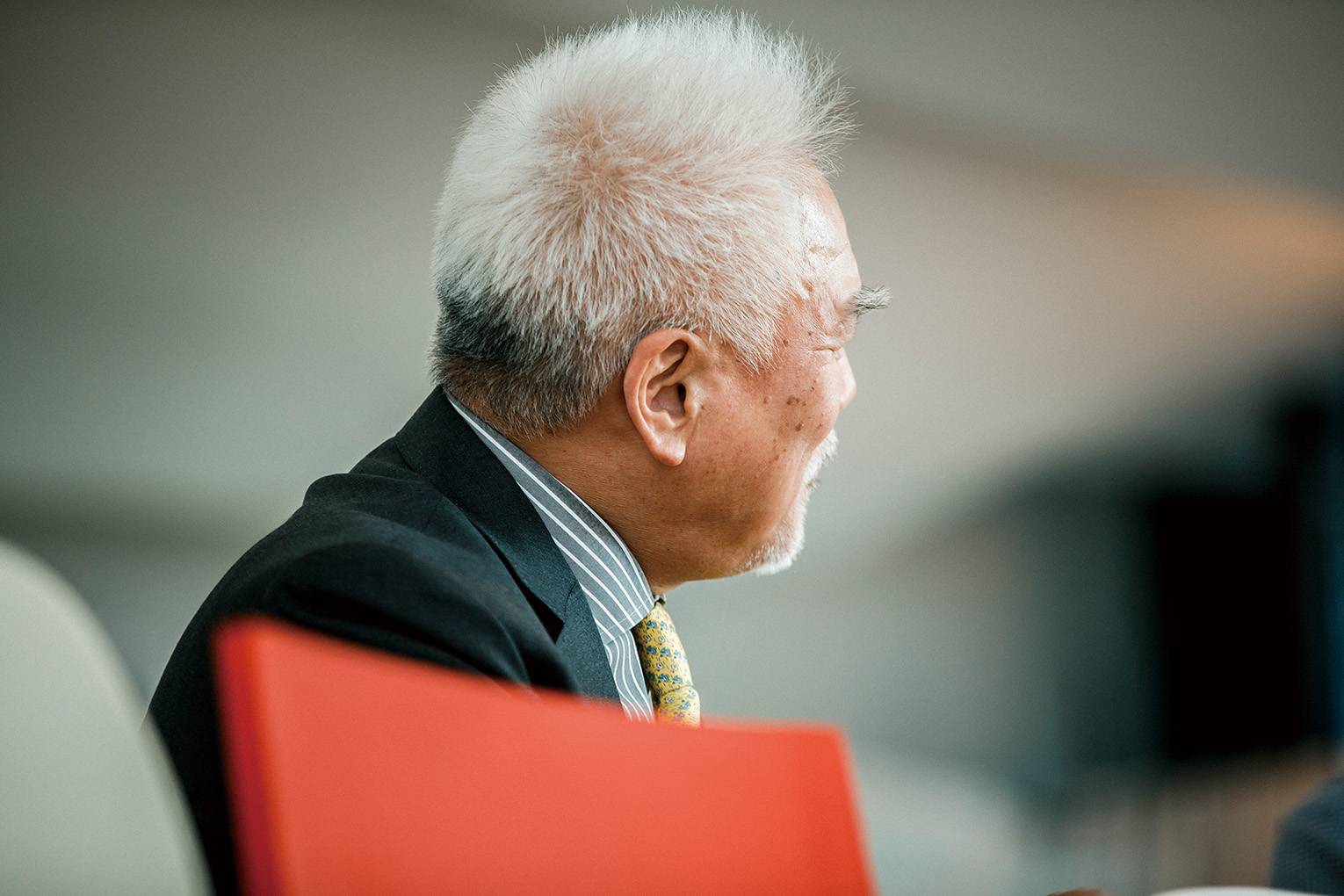
IGARASHI
I think tourism may play a pivotal role in the issue you raised. Japan is renowned for its cuisine, but a big part of tourism is just walking around town, and architecture is a big part of that. That just hasn't been picked up by the country and society. If we go to somewhere in Asia or Europe for sightseeing, we end up looking at the architecture there. This is why Japan needs to think about how it will build up a collection of quality architectural works moving forward. As things are now, we have created a cycle where excellent structures disappear and are replaced. This worries me.
TATENO
I went to Spain last summer. While there, I saw Gaudi's Sagrada Familia, which is scheduled for completion in 8 years. I could really understand why everyone who visits Barcelona says one reason they go is to see Gaudi's architecture. Spain receives around 82 million visitors a year compared to Japan's 30 million. You talked about buildings lasting for hundreds of years; maybe we should be building the types of structures today that will attract people from around the world to Japan in the future. They could become part of our cultural and architectural legacy.
IGARASHI
You hit the nail on the head. I also went to Barcelona last Spring for the first time in 20 years. Gaudi has long been famous, but I got the impression that there were even more people there to see his work than before. You can no longer enter Park Güell without an advance reservation, which would have been unthinkable in the past. They must be making a killing on entrance fees from foreign travelers. A lot of Gaudi's work was privately commissioned, but cities like Barcelona have taken notice of the positive economic impact a legendary architect such as Gaudi can generate.
TATENO
In terms of those restrictions, Barcelona might also have wanted to prevent everything from getting overrun by tourists. *Laughs.*
IGARASHI
You may be right about that. *Laughs.* Kyoto and its municipal bus system are really struggling with overtourism at the moment. But thanks to people like Gaudi, cities have experienced dramatic success in getting people to come visit, and this has translated into modern Spanish architects realizing the possibilities for their work. It's even contributed to Japanese architects such as Toyo Ito garnering new respect overseas, just by elevating the profession. Japan unfortunately lacks a culture of celebrating its architects. Today, there are a lot of Japanese innovators working overseas, including Toyo Ito and Kengo Kuma, as well as major firms like SANAA based in Tokyo. But few of their representative works are found in Japan's capital. Instead, they are overseas building landmarks for other cities.

TATENO
You're right.
IGARASHI
Sou Fujimoto has been pumping out work in France, but there are no major projects of his on a comparable scale in his native Tokyo. He is using all his incredible talent to add value to cities overseas rather than at home. That's because France has clearly recognized his talent and is actively providing him with the opportunities to exercise it. I really feel it's a waste that the place least aware of his worth is his home country, Japan.
TATENO
My impression has been that major international events such as the Olympics provide young architects with the unique opportunity to showcase their talents, but what is the actual state of affairs today? Is that still true?
IGARASHI
Well, young architects weren't given much of a chance to get involved in the upcoming Tokyo Olympics. For the last Tokyo Olympics, Kenzo Tange, who was 50 at the time, and Yoshinobu Ashihara, who was in his 40's, worked on the giant Olympic stadium. For smaller projects like the practice fields and restaurants in the Olympic Village, younger architects in their 30's got to take part. It is a bit disappointing. We've missed out on an important stepping stone for nurturing the next generation of architects.
TATENO
Our company got its start right after the Second World War. Two of the keys to our growth were the Tokyo Olympics and the 1970 world's fair in Osaka. The next big opportunities for our industry are the coming Tokyo Olympics and Expo 2025, which was recently decided. We would like to do something experimental with our metal hardware for these, but haven't really been able to. We've been in talks with Kengo Kuma about producing a new panic handle for him, and we think that will be an experimental piece. When we don't get chances, it's really hard to advance and develop our work. If more young people take up architecture, then maybe some new types of fixtures and hardware will take form. My only hope is that we get the chance to take our work to the next level.
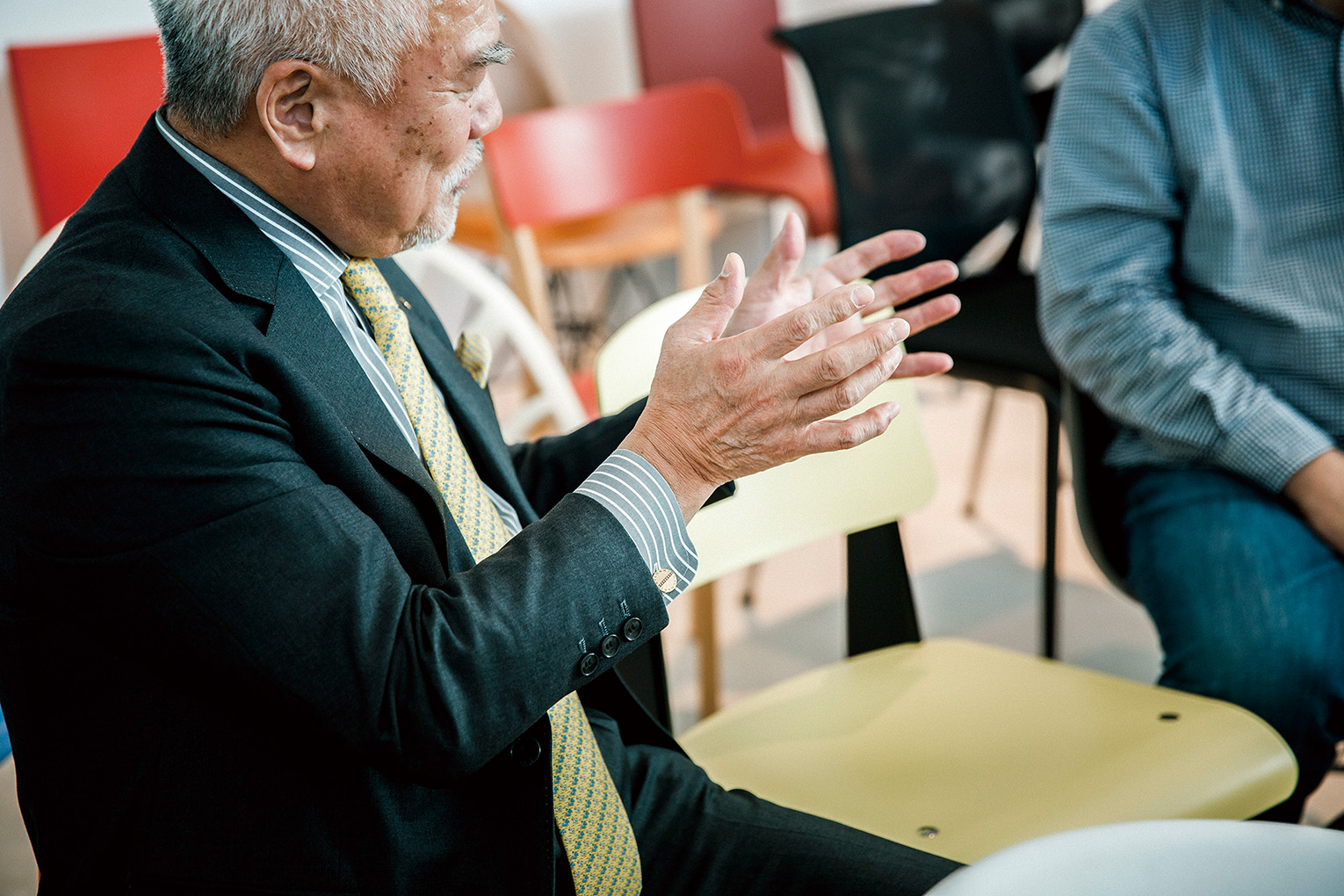
IGARASHI
I understand how you feel. The Olympics and world's fairs should be a time when we can really let go and experiment with things not normally possible. But unfortunately that's no longer the case. There's a trend for people to just want something that they can use. Look at the Beijing National Stadium, or Bird's Nest. That's the perfect example of a building that got a lot of attention yet wouldn't have been possible under normal circumstances. The unique timing of the Olympics made that design a reality, and the same can be said for Kenzo Tange's stadium from half a century earlier. These events present once-in-a-lifetime chances for young architects.
TATENO
I'm not so versed in the technical side of things, but I feel that constructions like suspended ceilings were quite revolutionary for their time. In that sense, I feel they've been playing it a bit safe with the Olympics this time around. If you are going to have Kengo Kuma involved, why not give him a bit more of a budget to work with so he can make something remarkable? At least that's how I feel.
IGARASHI
Exactly. In architecture, if you build something great, it will remain a cultural asset in the future. One example I often give for this is the Sydney Opera House. Today, you find it in travel pamphlets and guidebooks; it's pretty much featured in anything you can find talking about Australia. I believe it's now a World Heritage Site, and the youngest manmade structure designated as such to boot. It's only been around for about 40 years if I'm not mistaken.
TATENO
Wow. Is it still only 40 years?
IGARASHI
Yes. I heard it was quite a challenge to make a standing structure with that design. It was chosen from a number of proposals, but they had a really hard time bringing it to life. They even changed architects halfway through.
TATENO
Is that right?
IGARASHI
Their construction costs as well ballooned to many times the original estimates. The curved lines were originally a bit more free-form, but they couldn't achieve this with the technology at the time. In the end, they changed it to a more geometrically defined spherical cut-out to create what we see today. It all required a lot of money and time, and the original architect was even fired midway. It was quite a project.
TATENO
Incredible.
IGARASHI
But after it was finished, it became a truly one-of-a-kind landmark. If you wanted to promote Australia and hired an ad agency, you would still have to use a huge amount of money, and after a few years, you wouldn't have anything left to show for it. But as long as that building stands, you have a sort of living advertisement, which in the end makes you think maybe the money spent really wasn't that much.
TATENO
That's a great point. If you make something remarkable it will live on for future generations.
TATENO
Are there any pieces of historical Japanese architecture that you know of that have gotten attention on the world stage?
IGARASHI
Absolutely. The shrine at Itsukushima, for example. There's something mysterious and magical about a torii out over the water. Hiroshima's Atomic Bomb Dome. Even before the current foreign tourism boom, people came to Hiroshima from around the world.
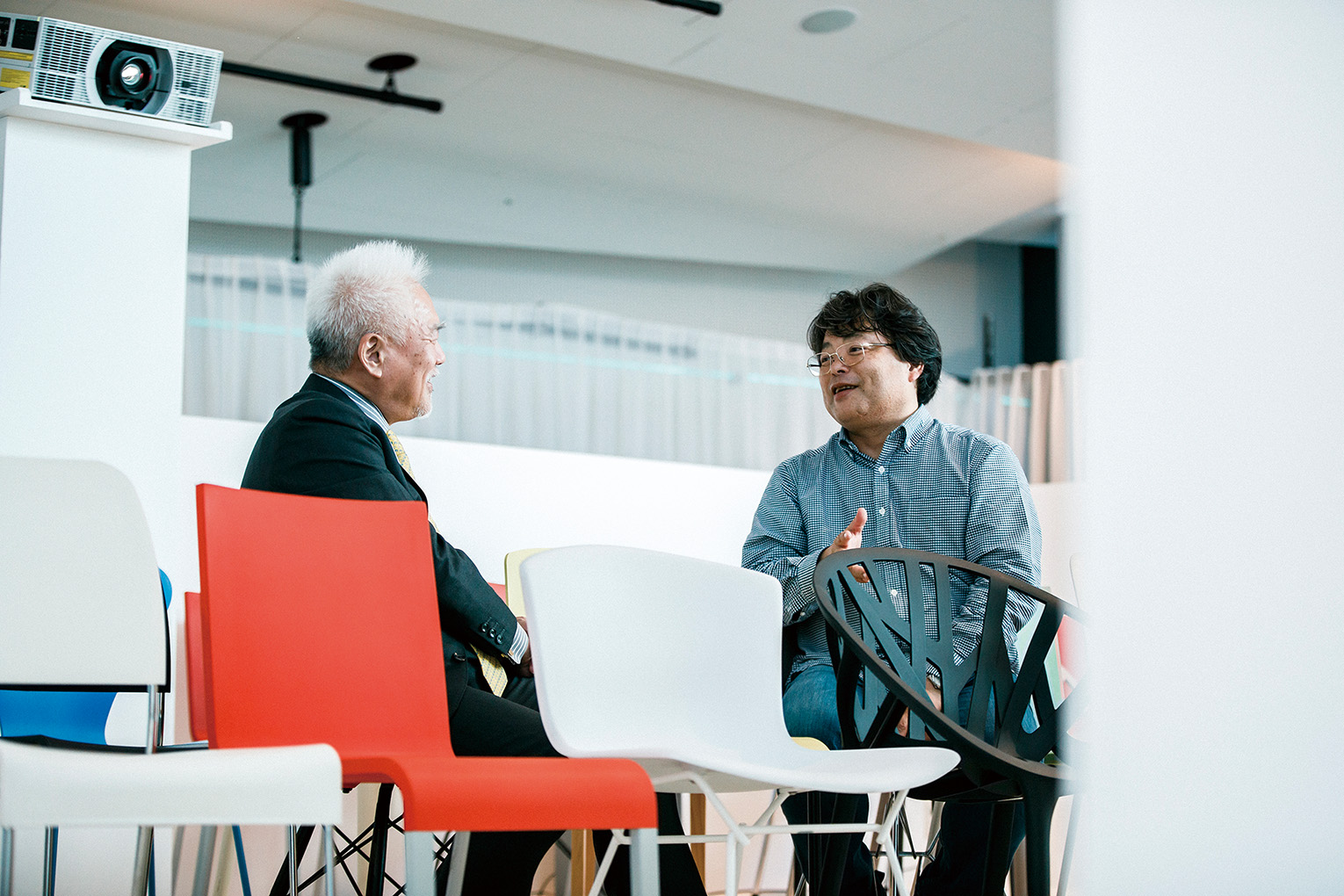
TATENO
Recently, Naoshima has also been popular among art lovers.
IGARASHI
Yes, Naoshima is getting famous. It has works by Ando-san, as well as SANAA. Getting to Naoshima is a bit inconvenient, but people make the trip because of all the great art and architecture.
TATENO
Benesse got involved in Naoshima, too, right?
IGARASHI
Indeed. If you do a good enough job, a project will bring in money. Even if it's expensive to visit, people will think "I've got to go see it!" and make the trip anyway.
TATENO
Coming back to our original topic, Taiyo Kokyo is fairly famous for their tents. They did most of the booths at the Osaka '70 World's Fair. From there, they went on to develop quite the global presence. Takara Belmont launched from a booth there and went on to grow rapidly internationally. World's Fairs offer so much potential for growth for companies, and for the development of new products. I wonder if the upcoming Osaka World Expo can be as vibrant.
IGARASHI
At the more recent Expo 2005 in Aichi, free-standing pavilions were a bit rarer. Most entrants had to share larger integrated spaces, in which they only got individual sections. Some, like Toyota, got their own pavilions. But compared to Expo '70, very little architecture from the Expo 2005 stands out in my memory.
TATENO
Yes, for example how Kisho Kurokawa's Takara Belmont suddenly jumped out and became famous. For the upcoming Osaka Expo, since it's being held in Japan, it would be great if they would let a lot of young Japanese people design the pavilions. At the very least, it would boost their confidence.
IGARASHI
At Expo '70, people like Kurokawa and Kiyonori Kikutake were just in their mid-thirties. But they had the chance to take on big projects and attract a lot of attention.
TATENO
Kurokawa-san also got the chance to do the Nakagin Capsule Tower, right?
IGARASHI
Yes. I've heard there's an ongoing debate about whether or not to preserve it. The building is not exactly on Tokyo's must-see list, but pretty much any foreign tourist with an interest in architecture goes to see it. Even today, Metabolism is the most globally famous Japanese architectural movement. And Nakagin Capsule Tower embodies the philosophy of Metabolism. It's quite close to Shinbashi and not that hard to get to. It's not a terribly large building; I think it would be a shame if we couldn't find some way to let it stay standing. Almost before I knew it was happening, Metabolist buildings started disappearing, even as Metabolist structures, materials and even blueprints have been snapped up overseas. The Centre Pompidou is putting together a collection.
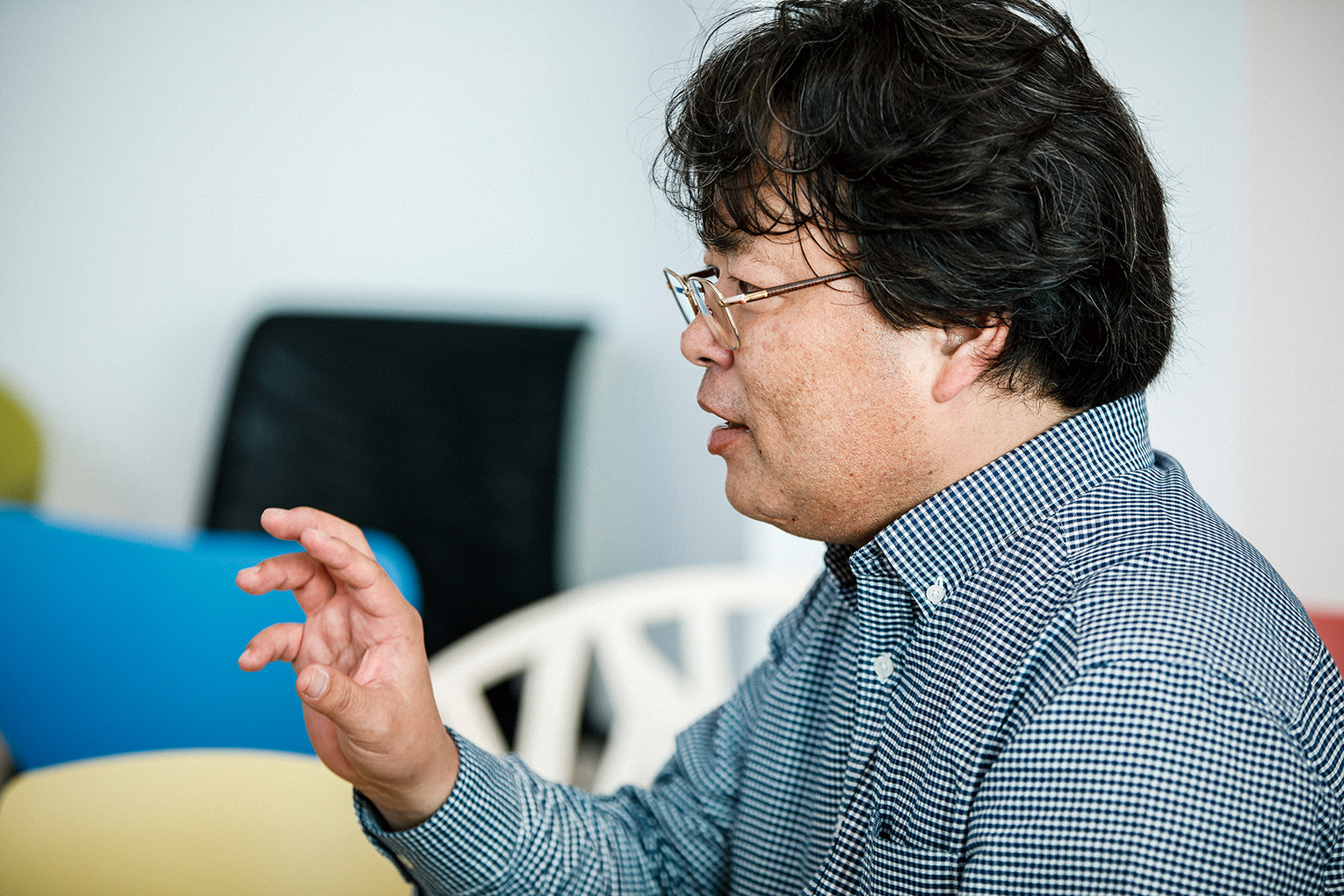
TATENO
Kind of like how ukiyo-e and Meiji-era antiques have been hemorrhaging out of the country?
IGARASHI
Exactly. Now the Japanese National Archives of Modern Architecture are beginning to get excited about Metabolism, but the Centre Pompidou's architectural division was much quicker on the uptake. Before anyone really started paying attention, Japan's domestic store of materials was greatly reduced. It's tragic when outsiders value your own culture more than people at home do, but that's why they have all those collections abroad.
TATENO
I think we need to take another look at Japan's wealth of traditional craftsmanship and techniques. This has the potential to really elevate the quality of contemporary Japanese architecture.
IGARASHI
That brings to mind Yutaka Murata's inflatable Fuji Group Pavilion for Expo '70. Come to think of it, the Centre Pompidou owns that one, too. They've acquired most of the materials for the experimental works from that Osaka World's Fair.
TATENO
So many visionary experiments. And almost all the groundbreaking designs from back then are now overseas. It's something to think about.
TATENO
I wonder if we could push for a national system aiming to build as many quality structures as possible for future generations?
IGARASHI
When it comes to Japan's declining regional communities, I think there are both buildings we should protect and ones we don't necessarily need. The problem is, people have trouble distinguishing between the two. For example, the former civic center for the city of Miyakonojo in Miyazaki Prefecture is in danger of being torn down, but there is a system in place that offers subsidies if a new building is built to replace it. There's a tendency to tear things down even if they are incredibly unique. It would be nice if there was some kind of system that provided money for continuing to use these exceptional buildings, but we've kind of failed to design such incentives.

TATENO
I feel like if you capitalized on these old buildings, you would get more young people going to the regional areas to visit them.
The question is how to bring people together while keeping the buildings standing. I think this could be the key to recreating and revitalizing these local communities.
IGARASHI
The Miyakonojo building was one of the great works built by Kiyonori Kikutake in the 1960's. These days when a one-of-a-kind building like that is torn down, it's almost always replaced with something conventional and uninspiring. I feel we are really losing something when all the architecture around train stations in Japan starts to look the same. It's important for structures to be aesthetically compelling. There are a lot of young people these days who visit places to take selfies are photos for their Instagram feeds. When I visited Hong Kong last, I went to see this university building designed by Zaha Hadid, and it was surrounded by young women. As they didn't appear to be particularly interested in architecture, their presence at first struck me as strange, but I soon realized they had come because they knew the building would look great on Instagram. That really surprised me.
TATENO
Exteriors are important. Of course, Japanese craftsmanship has so much more to offer, especially in terms of interiors and renovations. That said, our facades and the exteriors of our buildings are beginning to fall behind and look a bit shabby.
IGARASHI
In that sense, Seoul is really working on some bold projects. Take Zaha Hadid's Dongdaemun Design Plaza (DDP) for example. That is one incredible piece of work, and it took an unbelievably long time to complete. But when finished, it became one of the city's defining landmarks. Last year, they opened a new elevated pedestrian path called Seoullo 7017 as well. For this, the city renovated a former highway overpass straddling Seoul Station and turned it into an elevated, linear park open only to pedestrians. This project was contracted and designed by the Dutch firm MVRDV in an international bid held by the city.
TATENO
It sounds like the New York High Line.
IGARASHI
Yes, exactly. The High Line was designed with the help of Diller Scofidio + Renfro, and it really turned out great. They took a piece of old urban infrastructure, reworked it, and gave the city something fresh and new to be proud of. You just don't see projects like that in Tokyo.
TATENO
You have a point. There could have been something like that, but these things just don't happen in Japan.
IGARASHI
I think we need to build up layers to our cities, while taking on some really bold and transformative projects like the ones I mentioned.
The biggest issue with build-and-destroy construction is that when you replace the old it's not always an improvement. It would be fine if it were, but since that's so often not the case, I think it's important to leave behind layers of times gone by.
TATENO
That's intriguing.
IGARASHI
What makes looking at a gothic cathedral so amazing is its system of construction, and the fact that it represents the ultimate expression of a long lineage of stone structures. We just don't build giant buildings from stone like that anymore; the techniques we use are entirely different. This is why we can't surpass something of that stature, and why it remains an amazing sight to see even after 500 or 1,000 years. This is a really fascinating aspect of architecture. Looking forward, the things we build today may also be judged and evaluated 500 or 1,000 years down the line. Unlike technologies where we simply improve on and update the old, good architecture maintains a unique beauty across time.
TATENO
If the incredible architecture we have built up until now remains, but the knowledge they embody is transferred and takes root overseas, then we lose the sophisticated craftsmanship we have cultivated in Japan. We need to make sure to keep these traditions alive in Japan. If we don't get more people to think about Japanese architecture, then we are going to be left with an increasing number of dull, uninspiring buildings.
IGARASHI
There's an unfortunate trend in modern development in which cheap equals good. I know that it's not simply a matter of the more money spent the better, but I do feel that if you make something properly it will create value. This can even be in the form of passing down architectural traditions and techniques. Craftsmanship that surpasses a certain level of quality must be maintained and upheld if we don't want it to disappear.
TATENO
I couldn't have said it better. We need to start making buildings in Japan that improve with age. We have to build up the architectural landscape of our cities over the next 100 to 200 years. Even if it takes money and time, when viewed in the long term, the rewards are certain to outweigh the costs. That's what I think we need to aim for.
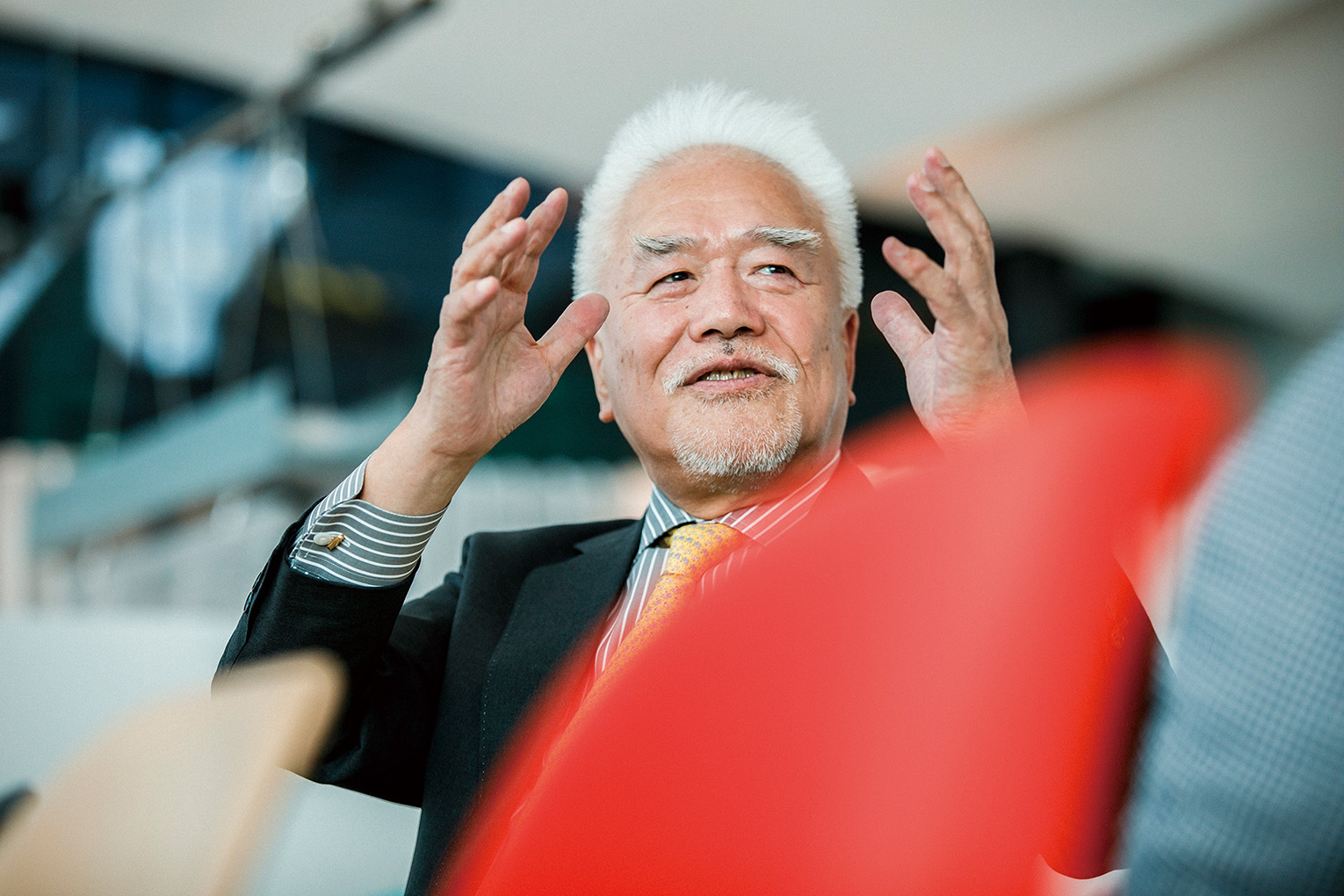
IGARASHI
I agree. Global cities across Asia, from Seoul and Taipei to Singapore, Beijing, and Shanghai, are undertaking ambitious and transformative architectural projects. They are actively pouring time and energy into their architecture to make sure they take a prominent seat among 21st century cities. But in Tokyo, there's no corresponding trend.
TATENO
Will Tokyo be okay, I wonder? I know that some places suffering from population decline have begun feeling the anxiety of their future, and are actually creating some really interesting public buildings in response.
IGARASHI
That's right. Before Akihisa Hirata built the Ota Municipal Art Museum and Library in Gunma, people there mainly used cars to get around, and there was hardly a person in sight near the train station. This got him and his team thinking about how best to enliven and uplift the station and its environs, which led to them tearing down half the roundabout in front of the station building and converting it into a museum and library. In many cases, it's the local communities most worried about their future who are undertaking the most ambitious and experimental projects.
TATENO
So that's the story behind it. As you were saying, we have to think about how we will attract people and breath new energy into our communities. People will go to Tokyo either way, which maybe explains their lack of concern.
IGARASHI
Yes, I feel Tokyo has kind of let this go to its head, and might be underestimating the gravity of the situation.
TATENO
I want to talk for a second about young architects. Whenever there's a chance to build something on a large scale, like for the Olympics, people always pick the safe option and go with a veteran architect. What do you think about that?
IGARASHI
Up until the mid-90's, there was a clear progression starting with doing private homes, after which you could move up to design public works. By the way, what's going on in China and the Middle East reminds me of bubble-era Japan. But anyway, after the bubble burst, the backlash destroyed that reliable progression for architects. People like Ito-san and Ando-san became just guaranteed to win out. And that's all very well and good for the men and women of their generation, but what of their successors? What will happen in 20 or 30 years, when none of the architects in their 50's have anything to show for themselves? I worry about the future of Japan.
TATENO
If you look at the qualifications architects need to design anything for the Tokyo Olympics, it seems like they set it up so that young people wouldn't even have a chance.
IGARASHI
However you want to look at it, there are certainly a lot of requirements and qualifications. Of course, the main stadium is going to need an expert, but there are all kinds of subsidiary buildings involved, like the Paralympic arenas. Actually, this is the first time they're building specialized training facilities for Paralympians. For example, wheelchairs will tear up the floor of an ordinary gymnasium, so their practice spaces have special requirements. Up until now, we haven't had a dedicated Paralympic arena. I think it's a real social good. But the building itself is this horrible box. Even if the main stadium is too much, I'd love to give some creative, ambitious young architects the chance to design things like training facilities, the Paralympic arena, or even the buildings of the Olympic Village.
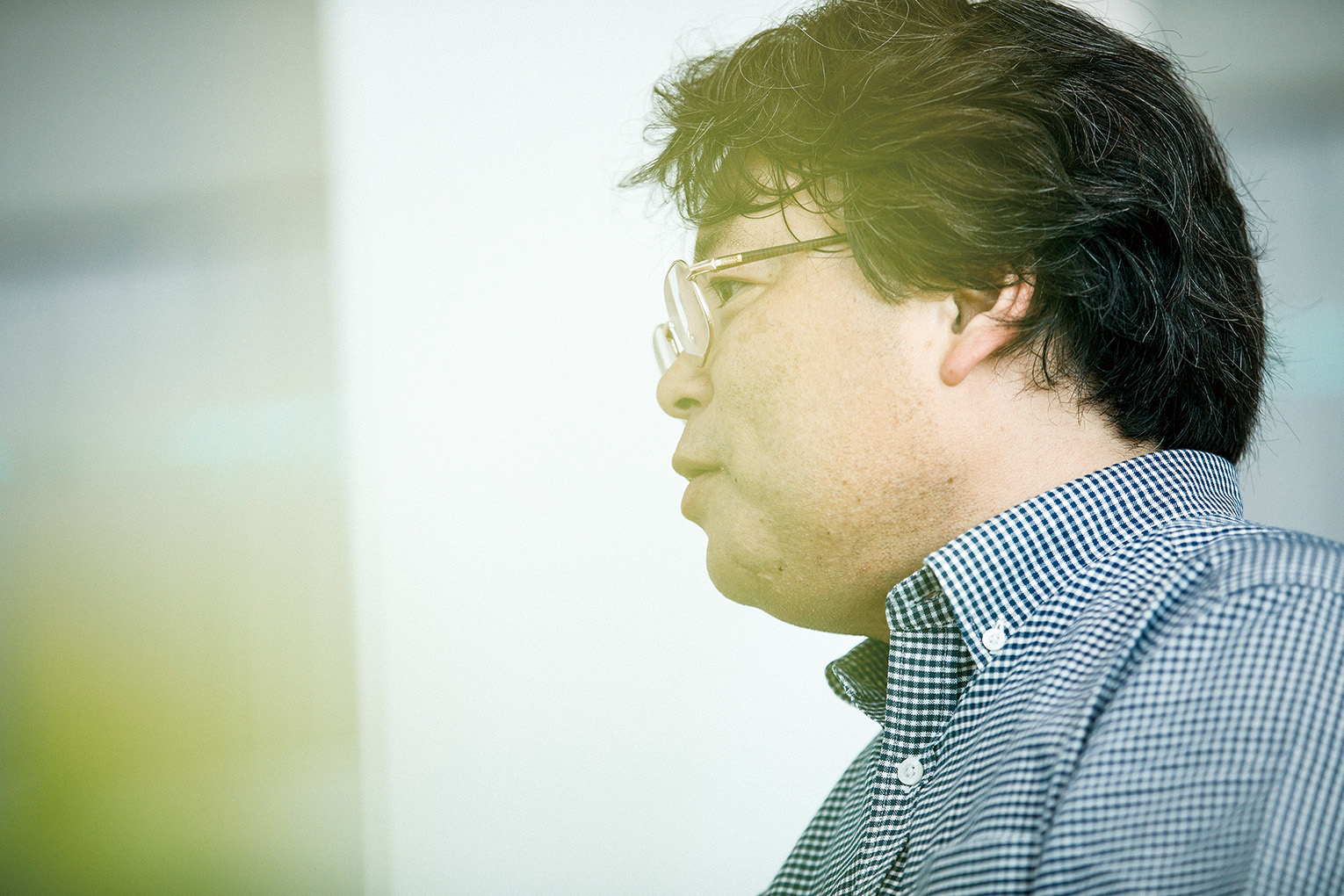
TATENO
I agree 100 percent! There's just nothing for young Japanese architects to do anymore domestically. So lots of them try their hand overseas. And for the ones who receive international acclaim, it's great. But so many others just become demoralized and drop out of architecture all together, feeling unneeded. What with so many general contractors now doing everything from design through construction, there's a sense of impending crisis.
IGARASHI
And with things like Design-Build, architecture jobs are becoming fairly tight. Overseas success stories like Fujimoto-san and Ishigami-san are all very well and good. But it would be great if we could see a bit more domestic projects.
TATENO
We've got to find some way to enliven or revitalize the world of Japanese architecture using Japanese architects within Japan.
TATENO
During Japan's economic bubble, when the country was overflowing with capital, we saw incredible growth in Japanese architecture. Do you think China's architectural industry will develop in a similar way moving forward?
IGARASHI
Good question. Earlier I went to the Venice Biennale and was surprised to see such a noticeable increase in interesting architecture in the provinces for the China exhibit. Young Chinese architects are going to these hard-to-reach rural places and building some really fantastic stuff. They had it on display. China is constructing a new layer in its architectural record. This is no time for Japan to sit idly on the sidelines.
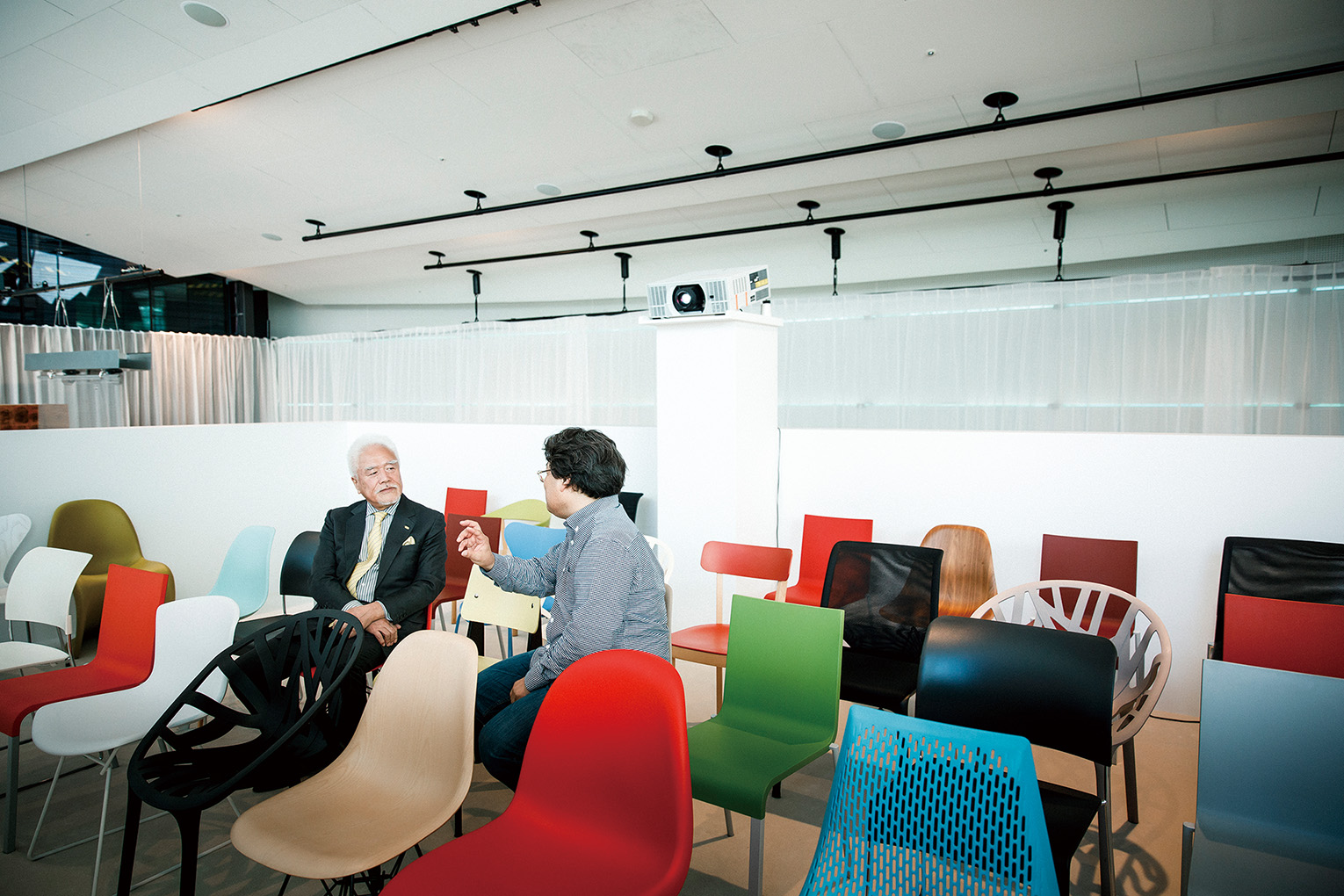
TATENO
In terms of technology and craftsmanship, I think China will probably catch up to Japan in another 5 years. If we hope to maintain our current position, we are going to need projects for our young architects to work on. Thinking up creative architectural ideas is one thing. But to move forward they need to learn by drawing up actual designs and constructing their visions in the real world. We have to create more opportunities for our young architects to get work. For their part, the upcoming generation also has to aim higher. Without the dream of making something inspiring, the architectural world's future will become stagnant.
IGARASHI
You have to have the drive to improve. In the latter part of the 1980's, when I was graduating from university, I made this really massive project for my design thesis. It was for this large-scale multi-purpose facility. But recently students have been doing their design theses on things like their grandmother's houses. Are they satisfied with doing something that small for their capstone work at university? *Laughs.*
TATENO
Wow, what happened to dreaming big? *Laughs.*
IGARASHI
It's important to be conscientious and to pay attention to detail, but a project for remodeling your grandmother's house is just not something you would have seen in the past. Whether for good or for bad, it's a sign of the times.
TATENO
Hmmm. Do you know if students today are heading overseas to check out architecture in other countries?
IGARASHI
I'm sure there are some. But in the past, if you went abroad and saw a group of Asian tourists, they were almost always Japanese.
TATENO
I remember those days.
IGARASHI
Now, there aren't as many Japanese tourists out traveling. When I last went to Spain, I saw mostly groups of Koreans and Chinese. The number of Japanese visitors must be declining, which is concerning. My generation was one of the first to start taking graduation trips overseas, and everyone was jumping at the chance to get out and explore. I just don't get that sense of hunger or yearning anymore.
TATENO
You've visited quite a few places, haven't you? I saw an archive of your trips on your website. That was really eye-opening.
IGARASHI
Thanks for taking a look.
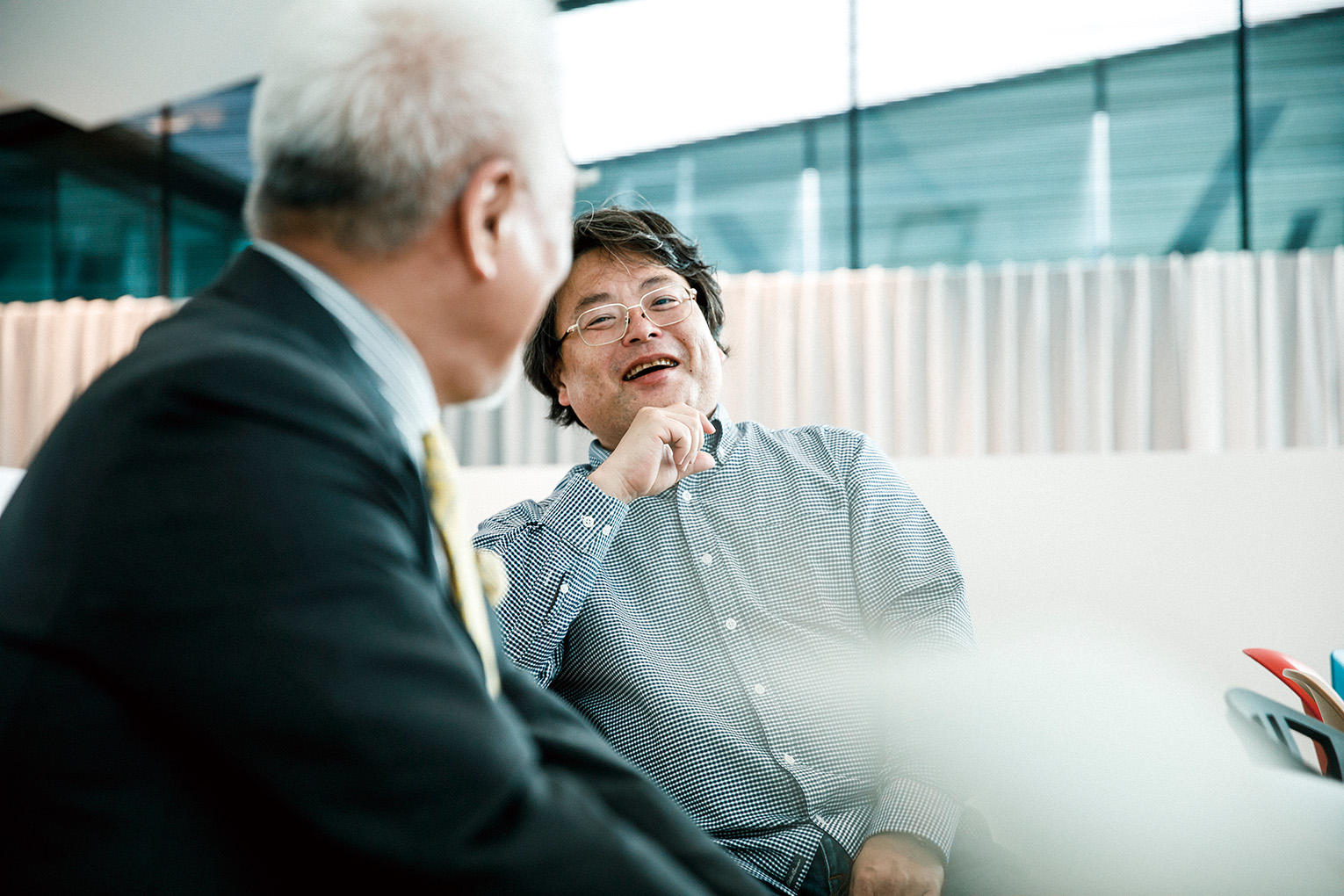
TATENO
We're currently teaming up with some architectural firms to plan an event in which we take some young talent overseas to look at various architectural works.
IGARASHI
That's a great idea. They used to do that all the time in the past. You don't hear about it at all these days though.
TATENO
Yes. We are going to look at buildings and their metal fixtures and fittings and study how these come together. I think it's important to notice these kinds of things. The same holds true for your field of expertise, architectural history. It's essential for young people to get out and see as much as they can, but there just aren't as many opportunities to do so in this world of constantly shifting priorities. I want to help change that. So if there are any buildings or architecture that you think today's young architects must see, please let me know.
IGARASHI
Yes, I'd be happy to.
*Interview concludes*
Both
Thank you very much.
Planning: Naoyuki Miyamoto
Photography: Norinao Miyanishi
Writing: Fumiya Daito
Web Direction: Ryo Kijima
Web Designer: Yuji Kumegawa